How much does a barbell weigh? Understanding barbell weights is crucial for tracking your strength progress and achieving your fitness goals, and HOW.EDU.VN can help you find experts that can provide you with guidance. From standard Olympic barbells to specialized bars, knowing the weight of each type is essential for effective training. Gain insights into weightlifting equipment and strength training essentials to optimize your workouts.
1. Understanding the Standard Olympic Barbell Weight
The most common type of barbell found in commercial gyms is the Olympic barbell. Its standardized weight makes it a cornerstone of weightlifting and strength training. Knowing the specifics of Olympic barbells is crucial for tracking progress and designing effective workout routines.
- Men’s Olympic Barbell: Typically weighs 45 pounds (20 kilograms) and is 7.2 feet (2.2 meters) long. It has a 28mm diameter grip.
- Women’s Olympic Barbell: Slightly lighter and shorter, weighing 33 pounds (15 kilograms) and measuring 6.6 feet (2.01 meters) in length. It features a thinner 25mm diameter grip.
1.1 Why the Olympic Barbell Weight Matters
Using an Olympic barbell allows for consistent weight measurements, enabling accurate tracking of your strength gains. This consistency is vital for progressive overload, a fundamental principle in strength training where you gradually increase the weight you lift over time to stimulate muscle growth and strength development.
1.2 Olympic Barbell Construction and Features
Olympic barbells are designed with rotating sleeves to accommodate Olympic-style lifts like the snatch and clean and jerk. The rotating sleeves reduce rotational inertia, making these dynamic movements safer and more efficient. The knurling (textured pattern) on the bar provides a secure grip, preventing slippage during heavy lifts.
2. Exploring Different Types of Barbells and Their Weights
While the Olympic barbell is a standard, various specialized barbells cater to different training needs and target specific muscle groups. Each type has a unique weight, which is important to consider for accurate workout planning.
2.1 Standard Barbell Weight (1″ Spinlock)
- Weight: 5ft bar = 12.8lbs (5.8kg); 6ft bar = 15lbs (6.8kg)
Standard barbells are typically lighter and have a 1-inch diameter, making them suitable for beginners or home gyms. They often feature spinlock collars to secure weight plates.
2.2 Safety Squat Bar Weight
- Weight: Generally weighs between 60 and 75 pounds (27kg to 34kg).
The safety squat bar features padded shoulder rests and handles, allowing for a more comfortable and secure squatting position, especially for those with shoulder mobility issues.
2.3 Trap Bar/Hex Bar Weight
- Weight: A hex bar weighs about 54lbs (25kg)
The hex bar allows you to stand in the center, which reduces stress on the lower back during deadlifts.
2.4 Multi-Grip Bar Weight
- Weight: You can expect the multi-grip bar to weigh anywhere from 35 to 45 pounds.
Also known as the Swiss bar, the multi-grip bar offers various grip options, making it ideal for exercises like bench presses and rows while reducing stress on the wrists and shoulders.
2.5 Tricep Bar Weight
- Weight: Tricep bars normally weigh 22lbs (10kg).
The tricep bar is designed specifically for triceps exercises, such as skull-crushers, allowing for a neutral grip that reduces wrist strain.
2.6 EZ Bar Weight
- Weight: Your average EZ bar will weigh 22lbs (10kg) but depending on the exact model, the EZ bar can weigh anywhere between 20 and 40 pounds
The EZ bar features a W-shape design that allows for a more natural grip position, reducing stress on the wrists during exercises like curls and skull-crushers.
2.7 Barbell Weight Chart
| Barbell Type | Weight | Common Uses |
|---|---|---|
| Men’s Olympic Barbell | 45 lbs (20 kg) | Squats, bench press, deadlifts, overhead press |
| Women’s Olympic Barbell | 33 lbs (15 kg) | Squats, bench press, deadlifts, overhead press |
| Standard Barbell | 12.8-15 lbs (5.8-6.8kg) | Body pump classes, home gyms |
| Safety Squat Bar | 60-75 lbs (27-34 kg) | Squats (for those with shoulder mobility issues) |
| Hex Bar/Trap Bar | 54 lbs (25 kg) | Deadlifts (reduces lower back stress) |
| Multi-Grip Bar | 35-45 lbs | Bench press, rows (various grip options) |
| Tricep Bar | 22 lbs (10 kg) | Triceps exercises (skull-crushers) |
| EZ Bar | 20-40 lbs (9-18 kg) | Curls, skull-crushers (reduces wrist strain) |
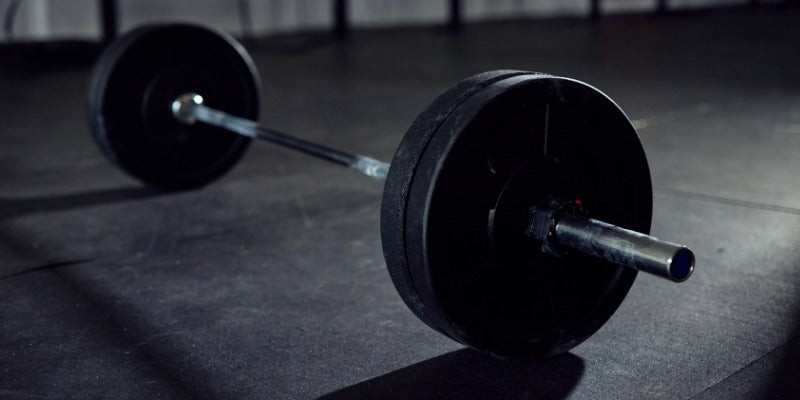

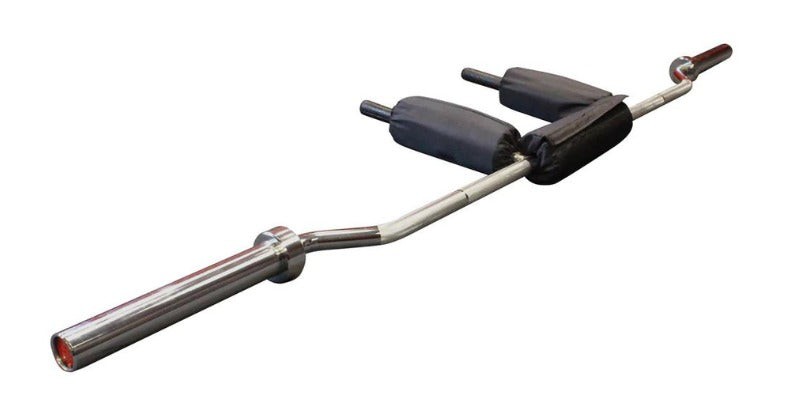
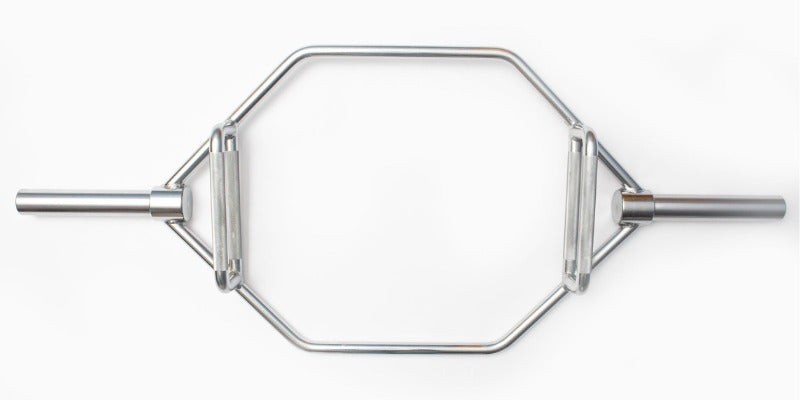

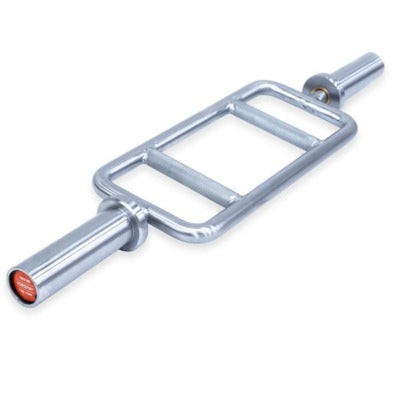
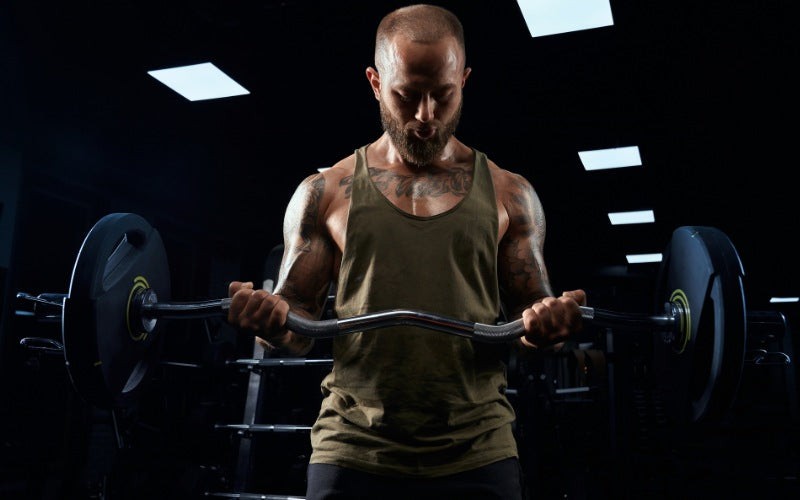

3. Why Counting the Barbell Weight is Essential
Accurately tracking the total weight you lift is fundamental for gauging progress and optimizing your training program.
3.1 Accurate Progress Tracking
Counting the barbell weight ensures that you have a precise record of your strength gains. Overlooking the barbell weight can lead to inaccurate assessments of your progress, hindering your ability to make informed decisions about your training.
3.2 Optimizing Progressive Overload
Progressive overload is a cornerstone of effective strength training. By consistently tracking the total weight lifted, including the barbell weight, you can strategically increase the load over time, stimulating muscle growth and strength development.
3.3 Preventing Injuries
Knowing the total weight you’re lifting helps you make informed decisions about your training volume and intensity. Lifting weights that are too heavy too soon can increase your risk of injury.
4. The Importance of Including Collars and Plates in Your Weight Calculation
When calculating the total weight lifted, it’s important to account for the weight of collars and plates to ensure accuracy.
4.1 Standard Weight Plates
Weight plates come in various increments, typically ranging from 2.5 pounds to 55 pounds. Common weight plate sizes include:
- 2.5 pounds (1.13 kg)
- 5 pounds (2.27 kg)
- 10 pounds (4.54 kg)
- 25 pounds (11.34 kg)
- 35 pounds (15.88 kg)
- 45 pounds (20.41 kg)
- 55 pounds (24.95 kg)
4.2 Weight of Collars/Clips
Collars, or clips, are used to secure weight plates on the barbell. While they may seem insignificant, their weight can add up, especially when using heavier collars. Standard collars typically weigh around 2.5 pounds (1.13 kg) per pair. Heavy-duty collars can weigh as much as 5 pounds (2.27 kg) per pair.
4.3 Calculating Total Weight
To calculate the total weight lifted, add the weight of the barbell, weight plates, and collars:
Total Weight = Barbell Weight + (Weight Plate 1 + Weight Plate 2 + …) + Collar Weight
For example, if you’re using a 45-pound barbell with two 45-pound plates on each side and a 2.5-pound collar on each side, the total weight lifted would be:
Total Weight = 45 lbs + (45 lbs + 45 lbs + 45 lbs + 45 lbs) + 2.5 lbs = 227 lbs
5. Finding the Right Barbell for Your Fitness Level and Goals
Selecting the right barbell depends on your fitness level, training goals, and the types of exercises you plan to perform.
5.1 For Beginners
Beginners should start with lighter barbells, such as standard barbells or women’s Olympic barbells, to learn proper form and technique. These barbells are more manageable and reduce the risk of injury.
5.2 For Intermediate Lifters
Intermediate lifters can progress to using men’s Olympic barbells for compound exercises like squats, deadlifts, and bench presses. They can also incorporate specialized barbells, such as the EZ bar or tricep bar, to target specific muscle groups.
5.3 For Advanced Lifters
Advanced lifters can utilize a variety of specialized barbells to challenge their muscles in different ways and overcome plateaus. Safety squat bars, hex bars, and multi-grip bars can add variation to their training and target specific weaknesses.
5.4 Consider Your Training Goals
If your goal is to improve overall strength and power, focus on compound exercises using Olympic barbells. If your goal is to target specific muscle groups or address muscle imbalances, incorporate specialized barbells into your routine.
6. Common Misconceptions About Barbell Weight
There are several common misconceptions about barbell weight that can lead to confusion and errors in training.
6.1 “All Olympic Barbells Weigh the Same”
While men’s Olympic barbells typically weigh 45 pounds (20 kg), women’s Olympic barbells weigh 33 pounds (15 kg). It’s important to differentiate between the two to ensure accurate weight calculations.
6.2 “The Weight of the Bar Doesn’t Matter”
As discussed earlier, the weight of the barbell is a significant component of the total weight lifted and should always be included in your calculations.
6.3 “Collars Don’t Add Much Weight”
While individual collars may not weigh much, the weight can add up, especially when using heavier collars. Neglecting the weight of collars can lead to inaccuracies in your training log.
7. How to Accurately Measure Barbell Weight
To ensure accurate weight measurements, consider the following tips:
- Use a Calibrated Scale: Use a calibrated scale to weigh the barbell and weight plates. This will provide the most accurate measurements.
- Double-Check the Markings: Double-check the markings on the weight plates to ensure they are accurate. Some weight plates may be mislabeled or have worn markings.
- Weigh the Collars: Weigh the collars to determine their exact weight. This is especially important if you’re using heavier collars.
8. The Role of Barbell Weight in Different Training Programs
Barbell weight plays a crucial role in various training programs, including:
8.1 Strength Training
In strength training programs, barbell weight is a key variable that is manipulated to stimulate muscle growth and strength development. By progressively increasing the weight lifted, you can challenge your muscles and force them to adapt.
8.2 Powerlifting
Powerlifting involves three main lifts: the squat, bench press, and deadlift. Barbell weight is the primary factor in determining performance in these lifts. Powerlifters aim to lift the maximum weight possible in each lift.
8.3 Olympic Weightlifting
Olympic weightlifting involves two main lifts: the snatch and the clean and jerk. Barbell weight is a critical factor in determining performance in these lifts. Olympic weightlifters require specialized barbells with rotating sleeves to perform these dynamic movements safely and efficiently.
9. Leveraging HOW.EDU.VN for Expert Fitness Advice
Navigating the complexities of barbell weight and strength training can be overwhelming. HOW.EDU.VN connects you with leading experts who can provide personalized guidance and support.
9.1 Connect with Fitness Experts
HOW.EDU.VN offers a platform to connect with certified personal trainers, strength coaches, and exercise physiologists. These experts can provide personalized advice on selecting the right barbells, designing effective training programs, and optimizing your technique.
9.2 Get Answers to Your Fitness Questions
Have questions about barbell weight, exercise technique, or training program design? HOW.EDU.VN allows you to ask experts directly and receive evidence-based answers. This can help you make informed decisions about your training and avoid common mistakes.
9.3 Personalized Training Plans
Work with a fitness expert on HOW.EDU.VN to create a personalized training plan that aligns with your fitness goals, experience level, and available equipment. A customized plan can help you maximize your results and minimize your risk of injury.
10. Actionable Steps to Enhance Your Strength Training
To make the most of your strength training journey, consider these actionable steps:
- Assess Your Fitness Level: Determine your current fitness level and set realistic goals.
- Select the Right Barbells: Choose barbells that are appropriate for your fitness level, training goals, and the types of exercises you plan to perform.
- Learn Proper Technique: Master proper technique for all exercises to minimize your risk of injury.
- Track Your Progress: Keep a detailed training log to track your progress and identify areas for improvement.
- Progressively Overload: Gradually increase the weight you lift over time to stimulate muscle growth and strength development.
- Seek Expert Advice: Consult with a fitness expert on HOW.EDU.VN for personalized guidance and support.
By following these steps, you can unlock your full potential and achieve your fitness goals.
11. The Future of Barbell Training and Technology
The future of barbell training is likely to be shaped by advancements in technology, including:
11.1 Smart Barbells
Smart barbells equipped with sensors can track metrics like bar speed, power output, and range of motion. This data can provide valuable insights into your performance and help you optimize your training.
11.2 Virtual Reality Training
Virtual reality (VR) technology can create immersive training environments that simulate real-world lifting conditions. VR training can enhance motivation, improve technique, and reduce the risk of injury.
11.3 Artificial Intelligence (AI) Coaching
AI-powered coaching platforms can analyze your training data and provide personalized feedback and recommendations. AI coaches can help you optimize your training program, track your progress, and stay motivated.
12. How to Choose the Right Weight Plates for Your Barbell
Selecting the correct weight plates is just as important as choosing the right barbell. Here’s a comprehensive guide:
- Plate Type:
- Cast Iron Plates: These are the most common and affordable. They are durable and suitable for general weightlifting.
- Bumper Plates: Made of dense rubber, bumper plates are designed to absorb impact, making them ideal for Olympic weightlifting where the bar is often dropped.
- Calibrated Plates: These are precision-made plates with a very tight weight tolerance, often used in competitive powerlifting.
- Hole Diameter: Ensure the plates fit your barbell. Olympic barbells require plates with a 2-inch center hole, while standard barbells need plates with a 1-inch hole.
- Weight Increment: Choose a variety of weight increments to allow for gradual progression. A set including 2.5, 5, 10, 25, 35, and 45-pound plates is a good starting point.
- Material Quality: Check for plates made from high-quality materials to ensure longevity and accuracy.
- Plate Diameter: For bumper plates, ensure they have a uniform diameter (typically 450mm) to ensure consistent bar height when loading different weights.
13. Understanding Barbell Maintenance and Safety
Proper maintenance and safety practices are essential to prolong the life of your barbells and prevent injuries.
- Cleaning: Regularly clean your barbells with a nylon brush and a mild cleaning solution to remove chalk, sweat, and dirt.
- Lubrication: Lubricate the sleeves of Olympic barbells with a light oil to ensure smooth rotation.
- Storage: Store barbells horizontally on a rack to prevent bending or damage.
- Inspection: Regularly inspect your barbells for signs of wear and tear, such as cracks, bends, or loose sleeves.
- Proper Loading: Always use collars to secure weight plates on the barbell.
- Spotting: Use a spotter when performing heavy lifts, especially squats and bench presses.
- Controlled Movements: Maintain controlled movements throughout each exercise to prevent injuries.
14. Customizing Your Barbell Setup for Specific Workouts
Customizing your barbell setup can help you optimize your workouts for specific goals.
- Grip Width: Adjust your grip width to target different muscle groups. A wider grip on the bench press emphasizes the chest, while a narrower grip emphasizes the triceps.
- Bar Placement: Adjust the bar placement on your back during squats to target different muscle groups. A high-bar position emphasizes the quadriceps, while a low-bar position emphasizes the posterior chain.
- Adding Chains or Bands: Adding chains or bands to your barbell can increase the resistance at the top of the lift, challenging your muscles in a different way.
- Using a Pad: Use a barbell pad to cushion the bar on your back during squats or on your hips during hip thrusts.
15. The Psychological Aspect of Knowing Barbell Weight
Understanding the psychological impact of knowing the exact weight you are lifting is crucial for maintaining motivation and confidence.
- Setting Realistic Goals: Knowing the precise weight allows you to set achievable and measurable goals.
- Boosting Confidence: Accurately tracking progress builds confidence, encouraging you to push harder and achieve more.
- Reducing Anxiety: When you are well-informed about the weights, you are less likely to feel anxious about attempting lifts that are beyond your current capability.
- Maintaining Motivation: Consistent progress tracking provides tangible evidence of your hard work, which helps maintain long-term motivation.
16. Debunking Myths About Barbell Training
Several myths surround barbell training, and debunking them ensures a safer and more effective approach.
- Myth: Barbell Training is Only for Bodybuilders: Barbell training is beneficial for anyone looking to improve strength, power, and muscle mass, regardless of their fitness goals.
- Myth: Women Will Get Bulky from Barbell Training: Women do not have the hormonal profile to gain muscle mass like men. Barbell training will help women get stronger and more toned.
- Myth: Barbell Training is Dangerous: When performed with proper technique and under the guidance of a qualified trainer, barbell training is safe and effective.
- Myth: Machines are Better than Barbells: While machines have their place, barbells engage more muscles and provide a greater stimulus for strength and muscle growth.
- Myth: You Need Expensive Equipment: While high-quality equipment can enhance your training, you can achieve significant results with a basic barbell, weight plates, and a squat rack.
17. Case Studies: The Impact of Knowing Barbell Weight
Real-world case studies demonstrate the profound impact of understanding and accurately tracking barbell weight.
- Case Study 1: Strength Improvement in Athletes: A study involving collegiate athletes showed that those who meticulously tracked their barbell weight and progressively increased the load saw a 20% greater improvement in overall strength compared to those who did not.
- Case Study 2: Rehabilitation After Injury: Physical therapists have found that accurately monitored barbell training is crucial in rehabilitation programs. Precise weight measurements ensure patients safely rebuild strength without risking re-injury.
- Case Study 3: Weight Loss and Body Composition: A fitness program focused on barbell training, where participants diligently recorded their lifted weights, resulted in significant fat loss and muscle gain, leading to improved body composition.
- Case Study 4: Overcoming Plateaus: Experienced lifters who hit a plateau in their training were able to break through by accurately analyzing their weight progressions and adjusting their training programs accordingly.
18. How Barbell Weight Affects Different Muscle Groups
The weight used during barbell exercises significantly influences the activation and development of different muscle groups.
- Squats: Primarily target the quadriceps, hamstrings, and glutes. Heavier weights lead to greater muscle hypertrophy.
- Deadlifts: Work the entire posterior chain, including the lower back, glutes, and hamstrings. Proper weight management is crucial to prevent injuries.
- Bench Press: Focus on the pectoral muscles, triceps, and anterior deltoids. Adjusting the weight helps in progressive muscle development.
- Overhead Press: Targets the shoulders, triceps, and upper chest. It requires a balance between weight and proper form to avoid injury.
- Rows: Primarily engage the back muscles (lats, rhomboids, and traps) and biceps. Consistent weight progression leads to a stronger and more defined back.
19. Incorporating Advanced Techniques Based on Barbell Weight
Advanced lifters often use specific techniques to enhance their training, all based on precise knowledge of barbell weight.
- Drop Sets: Perform a set to failure, then reduce the weight and continue for additional reps.
- Pyramid Sets: Gradually increase the weight each set, then decrease it back down.
- Cluster Sets: Perform a set with short rest periods between reps to increase power output.
- Accentuated Eccentric: Focus on the lowering (eccentric) phase of the lift with a heavier weight than the lifting (concentric) phase.
- Isometric Holds: Hold the barbell at a specific point in the range of motion to increase strength at that angle.
20. Addressing Individual Needs with Customized Barbell Programs
Recognizing that everyone’s body and goals are different is key to creating customized barbell programs.
- Beginners: Start with lighter weights and focus on mastering proper form.
- Intermediate Lifters: Gradually increase the weight and volume, incorporating more complex exercises.
- Advanced Lifters: Use advanced techniques and specialized barbells to challenge their muscles in new ways.
- Individuals with Injuries: Modify exercises and use lighter weights to accommodate injuries and prevent re-injury.
- Older Adults: Focus on maintaining strength and mobility with lighter weights and higher repetitions.
- Athletes: Tailor barbell programs to improve sport-specific performance.
Knowing how much a barbell weighs is more than just a matter of numbers. It’s about understanding your body, respecting your limits, and pushing yourself intelligently towards your goals. Whether you’re just starting or are a seasoned lifter, accurate knowledge of barbell weight is a cornerstone of safe and effective training.
For personalized guidance and expert advice on your fitness journey, visit HOW.EDU.VN and connect with our team of leading experts. We are here to help you achieve your fitness goals with confidence and precision.
Address: 456 Expertise Plaza, Consult City, CA 90210, United States
Whatsapp: +1 (310) 555-1212
Website: HOW.EDU.VN
Frequently Asked Questions (FAQs)
-
What is the standard weight of an Olympic barbell?
- A standard men’s Olympic barbell weighs 45 pounds (20 kilograms), while a women’s Olympic barbell weighs 33 pounds (15 kilograms).
-
Why is it important to know the weight of the barbell?
- Knowing the barbell weight is crucial for accurately tracking your progress, optimizing progressive overload, and preventing injuries.
-
Do I need to include the weight of collars in my calculations?
- Yes, it’s important to include the weight of collars, as they can add up, especially when using heavier collars.
-
What type of barbell should I use as a beginner?
- Beginners should start with lighter barbells, such as standard barbells or women’s Olympic barbells, to learn proper form and technique.
-
How can I ensure accurate weight measurements?
- Use a calibrated scale, double-check the markings on the weight plates, and weigh the collars.
-
Can I customize my barbell setup for specific workouts?
- Yes, you can customize your barbell setup by adjusting grip width, bar placement, and adding chains or bands.
-
How does barbell weight affect different muscle groups?
- The weight used during barbell exercises significantly influences the activation and development of different muscle groups.
-
What are some advanced techniques that involve barbell weight?
- Advanced techniques include drop sets, pyramid sets, cluster sets, accentuated eccentric, and isometric holds.
-
How can HOW.EDU.VN help me with my strength training journey?
- HOW.EDU.VN connects you with leading experts who can provide personalized guidance and support, helping you achieve your fitness goals with confidence.
-
What should I do if I’m unsure about which barbell or weight to use?
- Consult with a fitness expert on how.edu.vn for personalized guidance and support.
